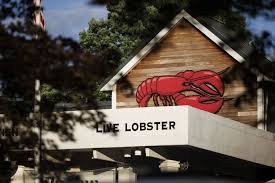Red Lobster and TGI Fridays closing dozens of locations across the U.S. has sparked major concerns about the future of casual dining. As two of the most well-known restaurant chains struggle to stay afloat, customers are left wondering what’s really going on behind the scenes. Rising costs, changing dining habits, and tough competition are forcing these brands—and many others, to make tough decisions. In this article, we’ll dive deep into why these closures are happening, which other chains are at risk, and what the future holds for American restaurants.
Why Are Red Lobster and TGI Fridays Closing?
Red Lobster TGI Fridays Closing Explained
Red Lobster closed over 100 restaurants before filing for Chapter 11 restructuring under Fortress Investment Group, while TGI Fridays followed with bankruptcy protection in November 2024.
- Supply chain disruptions and mismanagement under Thai Union crushed Red Lobster’s profitability
- TGI Fridays suffered from a burdensome capital structure and inflationary pressures
- TGI Fridays U.S. footprint shrank from ~270 to around 163–85 locations by mid‑2025
Chain Closures Summary
| Chain | Closed Units (Approx) | Reason | Owner |
|---|---|---|---|
| Red Lobster | 100+ | Bankruptcy, low traffic | Thai Union → Fortress |
| TGI Fridays | ~160 | Capital structure, declining sales | TriArtisan Capital |
Changing Dining Preferences: What’s Driving the Closures?
- Post-pandemic habits: customers prefer delivery, takeout, and fast casual
- Traffic dropped ~0.5% at full-service brands, while fast-casual saw +3.2% and fast food +0.6% growth
- Inflation squeezes middle-income diners toward affordable concepts
- Labor & construction costs make sit-down formats expensive to maintain
What’s Replacing Red Lobster and TGI Fridays Locations?

- Chick‑fil‑A, Chipotle, First Watch, and Fogo de Chão are expanding into former Red Lobster and TGI Fridays sites
- Example: a Red Lobster in Naples, FL is now a Chick‑fil‑A; in Virginia, TGI Fridays locations converted into LongHorn Steakhouse and First Watch units
- Many landlords prefer drive‑thru tenants due to higher rents and lower staffing needs
- Average Red Lobster site is ~7,600 sq ft; most fast-casual brands prefer much smaller footprints (~2,400 sq ft) → costly conversions often require demolition and redevelopment
Replacement Tenant Table
| Former Chain | New Tenant | Concept Type | Region |
|---|---|---|---|
| Red Lobster | Chick‑fil‑A | Fast Food | Naples, FL |
| TGI Fridays | LongHorn Steakhouse | Casual Dining | Woodbridge, VA |
| Red Lobster | Credit Union | Financial Retail | Watertown, NY |
| Red Lobster | First Watch | Breakfast Dining | Bel Air, MD; Franconia, VA |
Real Estate Demand: Why These Sites Are Coveted
- Casual dining real estate is freestanding, has parking, and sits on high-traffic roads
- U.S. retail vacancy is at historic lows (~4.1%), intensifying competition for second-generation spaces
- Rising cap rates and construction costs, tenant improvements for conversions can exceed $200/sq ft, often surpass demolition costs
Which Other Dining Chains Are at Risk?
Other popular restaurant chains are also facing trouble, just like Red Lobster and TGI Fridays closing many of their locations. For example, Denny’s plans to shut down around 150 restaurants in 2024 and 2025 because they are not making enough money.

Big names like Applebee’s, IHOP, Olive Garden, and Buca di Beppo are also struggling. These restaurants are finding it hard to keep up with high costs, changing customer habits, and strong competition from faster, cheaper food options.
To deal with these problems, some chains are trying new ideas. One smart move is the Applebee’s-IHOP dual-brand stores, which are testing smaller, cheaper-to-run restaurants. These new stores cost less to build and work better for takeout and delivery.
What Are Customers Saying About the Closures?
The news of Red Lobster and TGI Fridays closing locations has sparked strong reactions from longtime customers across the country. Many took to social media to express their disappointment, especially those who grew up dining at these iconic chains.
On platforms like Twitter and Facebook, users shared memories of birthday dinners, weekend family outings, and first dates at these restaurants. For them, it’s more than just a business closing, it’s the end of an era.
However, not all feedback was positive. Several customers also pointed out the declining quality in food and service over the past few years. Online reviews on sites like Yelp and Google show a pattern of complaints about slow service, outdated menus, and rising prices. Some customers even said they “saw it coming.”
The Future of Casual Dining in America
How Some Restaurants Are Still Surviving
Even with Red Lobster and TGI Fridays closing many stores, not every casual dining chain is in trouble. Brands like First Watch, Texas Roadhouse, and Cheesecake Factory are doing well because they keep changing with the times. They focus on quality food, great service, and giving customers more value.
New Restaurant Models Are Taking Over
To stay open, more restaurants are switching to new styles like fast-casual, delivery-only kitchens, and ghost kitchens. These are cheaper to run and work better for online orders. Many chains are dropping the big, sit-down locations and going with smaller, more flexible setups.
Why Menus and Digital Features Matter More Than Ever
Menus now need to be simple, affordable, and fast to prepare. At the same time, customers want easy online ordering, mobile apps, and smooth delivery. Restaurants that invest in digital tools are doing better than those that don’t. This change is one of the reasons for Red Lobster and TGI Fridays closing locations—they were slow to keep up.
Investors Want Smarter, Simpler Businesses
Restaurant investors are now looking for lean operations, better cost control, and global expansion. A good example is Red Lobster, which exited bankruptcy with the help of Fortress Investment Group. The plan is to focus on fewer, better-performing locations and improve how things run behind the scenes.
FAQs About the Red Lobster TGI Fridays Closing
Q: Why is Red Lobster closing so many locations?
Because of financial distress under prior ownership, declining foot traffic, and pandemic-related losses, Red Lobster filed for bankruptcy and is restructuring to focus only on profitable units.
Q: Is TGI Fridays going bankrupt?
Yes. TGI Fridays filed for Chapter 11 in November 2024 due to high debt and declining U.S. sales, even as franchise-operated locations internationally remain open.
Q: What chains are moving into former Red Lobster and TGI Fridays spots?
Major fast-food and fast-casual chains like Chick‑fil‑A, Chipotle, First Watch, and LongHorn Steakhouse are repurposing these sites.
Q: Are additional sit-down chains at risk of closing stores?
Yes. Denny’s, Applebee’s, Olive Garden, and IHOP have announced closures and new prototype strategies to remain viable.
Q: What does this trend mean for the casual dining market?
It signals a shift toward smaller footprint, lower-cost, fast-casual models. Only adaptable brands will survive in a post-pandemic, inflation-impacted industry.


No responses yet